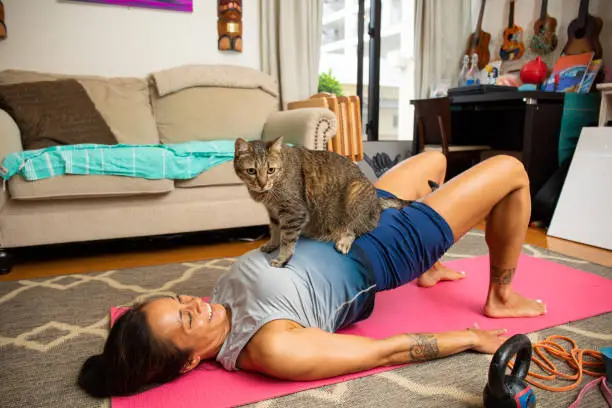How to Set Up a Pet-Friendly Routine: Time Management Tips for Cat and Dog Owners

Balancing a busy life with the needs of your pet can be challenging. Whether you’re juggling work, family, and social commitments, creating a pet-friendly routine ensures that your cat or dog receives the care, attention, and exercise they need. This guide provides practical time management tips to help you establish a routine that benefits both you and your furry friend.
1. Assess Your Pet’s Needs
Before setting up a routine, it’s essential to understand your pet’s daily needs:
- Exercise: Dogs typically require regular walks and playtime. The amount varies by breed, age, and energy level.
- Feeding: Cats and dogs need consistent feeding schedules based on their dietary needs and health.
- Grooming: Regular brushing, nail trimming, and grooming sessions are necessary, especially for long-haired breeds.
- Mental Stimulation: Pets, particularly dogs, benefit from activities that challenge their minds, such as puzzle toys and training exercises.
2. Create a Daily Schedule
Morning Routine
- Feeding: Start the day by feeding your pet. Consistent meal times help regulate their digestive system.
- Exercise: Plan a morning walk or play session for your dog. Cats may benefit from interactive toys or playtime.
- Grooming: If your pet requires daily grooming, include it in your morning routine. Brush their coat to reduce shedding and matting.
Daytime Schedule
- Work or Personal Time: During your workday, ensure your pet has adequate stimulation. Consider:
- Interactive Toys: Keep your pet engaged with toys that dispense treats or require problem-solving.
- Pet Camera: Monitor your pet’s activity and well-being while you’re away.
- Pet Sitter or Daycare: For extended absences, a pet sitter or daycare service can provide socialization and care.
Evening Routine
- Exercise: Schedule another walk or play session in the evening. This helps your pet wind down and ensures they get sufficient exercise.
- Feeding: Provide an evening meal for your pet if you’re feeding them twice a day.
- Relaxation: Spend quality time with your pet, whether it’s through cuddles, interactive play, or training sessions.
3. Set Up a Weekly Routine
Regular Tasks
- Grooming: Plan weekly grooming sessions, including brushing, nail trimming, and any necessary baths.
- Health Checkups: Schedule regular vet appointments and keep track of vaccinations, flea and tick treatments, and dental care.
- Cleaning: Clean your pet’s living area, including their bedding, litter box (for cats), and feeding dishes, regularly.
Special Activities
- Training Sessions: Incorporate training or obedience sessions into your weekly routine to reinforce good behavior and teach new tricks.
- Socialization: Arrange playdates or visits to dog parks for social interaction and exercise.
- Enrichment: Rotate toys and introduce new activities to keep your pet’s environment stimulating and engaging.
4. Time Management Tips for Pet Owners
Prioritize Tasks
- Make a List: Create a daily and weekly checklist for your pet’s needs. This helps you stay organized and ensures nothing is overlooked.
- Use a Calendar: Schedule grooming, vet appointments, and other pet-related tasks on your calendar to keep track of important dates.
Delegate Responsibilities
- Family Involvement: Share pet care duties with other family members. Assign tasks such as feeding, walking, or cleaning to distribute the workload.
- Pet Care Services: Utilize pet care services, such as dog walkers or pet sitters, to assist with your pet’s needs when you’re busy.
Establish a Routine
- Consistency: Stick to a consistent daily routine for feeding, exercise, and grooming. Pets thrive on routine and it helps them feel secure.
- Time Blocks: Allocate specific time blocks in your schedule for pet care. This makes it easier to manage your time effectively and ensures your pet’s needs are met.
Utilize Technology
- Apps and Reminders: Use pet care apps or set reminders on your phone for feeding, medication, and appointments.
- Automated Feeders: Consider investing in automated feeders to dispense food at scheduled times, especially useful for busy schedules.
5. Adapting to Changes
Flexibility
- Adjust as Needed: Be prepared to adjust your routine based on changes in your pet’s health, age, or energy levels.
- Temporary Care: Plan for temporary changes, such as vacations or work trips, by arranging for pet sitters or boarding services.
Communication
- Inform Caregivers: If someone else is taking care of your pet, ensure they understand the routine and any specific needs your pet may have.
- Updates: Keep open communication with caregivers about any changes in your pet’s behavior or health.
6. Balancing Your Schedule
Self-Care
- Personal Time: Ensure you allocate time for your own self-care and relaxation. A balanced schedule benefits both you and your pet.
- Quality Time: Focus on quality interactions with your pet, rather than just fulfilling routine tasks. Engaging activities strengthen your bond and improve your pet’s well-being.
Efficiency
- Streamline Tasks: Combine tasks where possible, such as exercising while training or grooming while watching TV.
- Optimize Routine: Continuously assess and optimize your routine to improve efficiency and ensure all needs are met.
7. Conclusion
Setting up a pet-friendly routine involves thoughtful planning and effective time management. By understanding your pet’s needs, creating a structured daily and weekly schedule, and utilizing tools and strategies to stay organized, you can provide the best care for your cat or dog while maintaining a balanced lifestyle. With a well-established routine, both you and your pet can enjoy a harmonious and fulfilling life together.
Happy scheduling!




